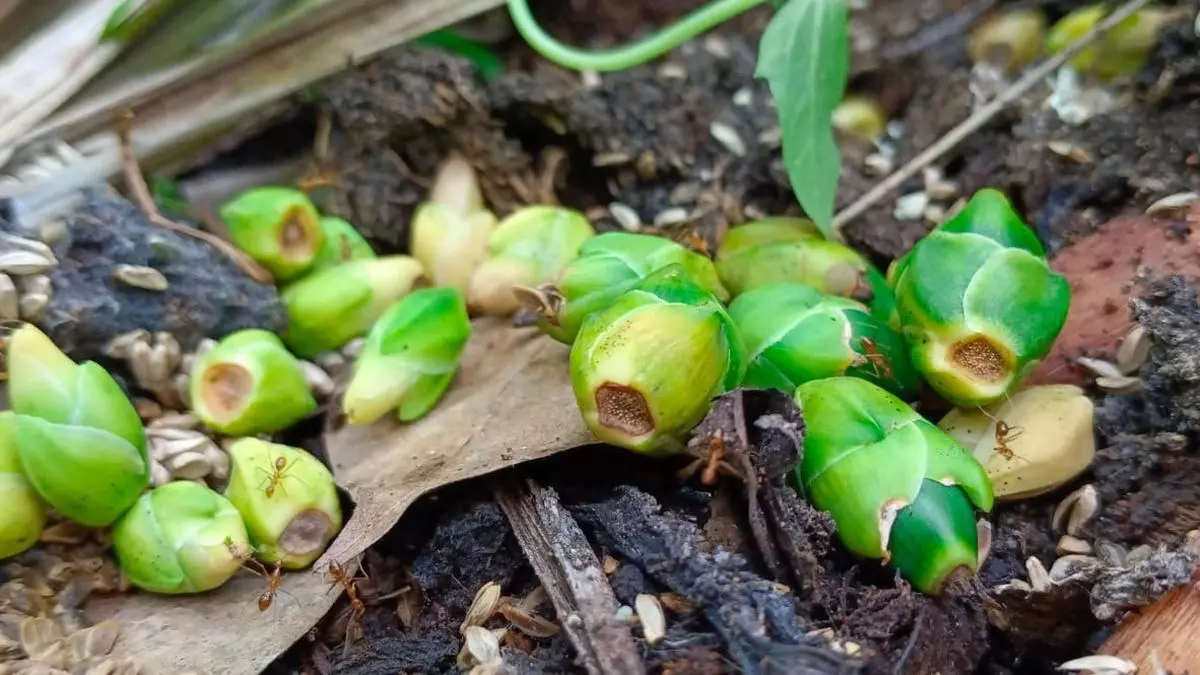Arecanut gains as prevailing drought, climate change impact
Arecanut prices are witnessing uptrend due to shortage of stocks with growers and in the market. Stakeholders in the arecanut sector feel that the climate change in the recent years and drought have impacted the production of the commodity.
Price of red variety of arecanut has seen almost 10 per cent jump in a month.
Rashi variety of red arecanut was quoted a maximum of ₹536 a kg in the APMCs of red arecanut markets such as Channagiri and Shivamogga on Monday. This price had reached a maximum of ₹488 a kg in March.
A market source said that there has been shortage of red arecanut as many growers had sold a considerable portion of their stocks a few months ago. Production of red arecanut is likely to be impacted in the coming days also as several regions are facing drought now.
Giving the example of Soolekere lake in Channagiri taluk of Davangere district (one of the major red arecanut growing regions), the source said this lake dried up this year. Many arecanut plantations are dependent on this water source for meeting their requirements.
Comparatively, white arecanut prices have remained almost stable with a little jump in a month’s period. New stocks of white arecanut command up to ₹360 a kg in the market now, and old stocks up to ₹440 a kg. The prices of new and old stocks were up to ₹345 a kg and ₹415 a kg, respectively, a month ago.
In fact, the multi-state cooperative Central Arecanut and Cocoa Marketing and Processing Cooperative (Campco) Ltd had suspended the procurement of arecanut from March 26 to April 6 to implement Enterprise Resource Planning (ERP) for its operation.
Venugopal P, a farmer from Puttur, said the white arecanut market remained steady during that period despite Campco being absent from the market for almost two weeks. However, there was no major decline in the prices also. (Campco plays a major role in stabilising the prices of white arecanut in the market.)
Decline in production of arecanut has also helped support the price of white arecanut in the market.
Mahesh Puchhappady, President of All India Areca Growers’ Association, told businessline that the climate change in the recent years has impacted the production of arecanut in the growing areas.
Referring to this year’s climate, he said the temperature is above 40 degrees Celsius now in some arecanut growing regions. Such a situation would lead to the dropping of tender nuts from the plant impacting the production of the commodity. Climate change led to production decline of around 35 per cent last year also.
A Kishore Kumar Kodgi, President of Campco, told businessline that tight control on the illegal import of arecanut during the election period has helped stabilise the market. This has led to the increase in the prices of arecanut in the domestic market.
Campco had given several representation to the Government in the past to curb the illegal import of arecanut through various means.
White and red
Arecanut is classified as red and white varieties based on processing of the commodity. White arecanut is prepared by sun drying the ripe arecanut and de-husking it. Old stocks of white arecanut commands a higher price than the new stocks in the market.
Preparation of red arecanut involves the process of dehusking green arecanuts followed by boiling and drying them. Coastal Karnataka districts and certain regions of Kerala produce white arecanut. Red arecanut is prominently produced in Shivamogga, Davangere, and Chitradurga districts of Karnataka.
